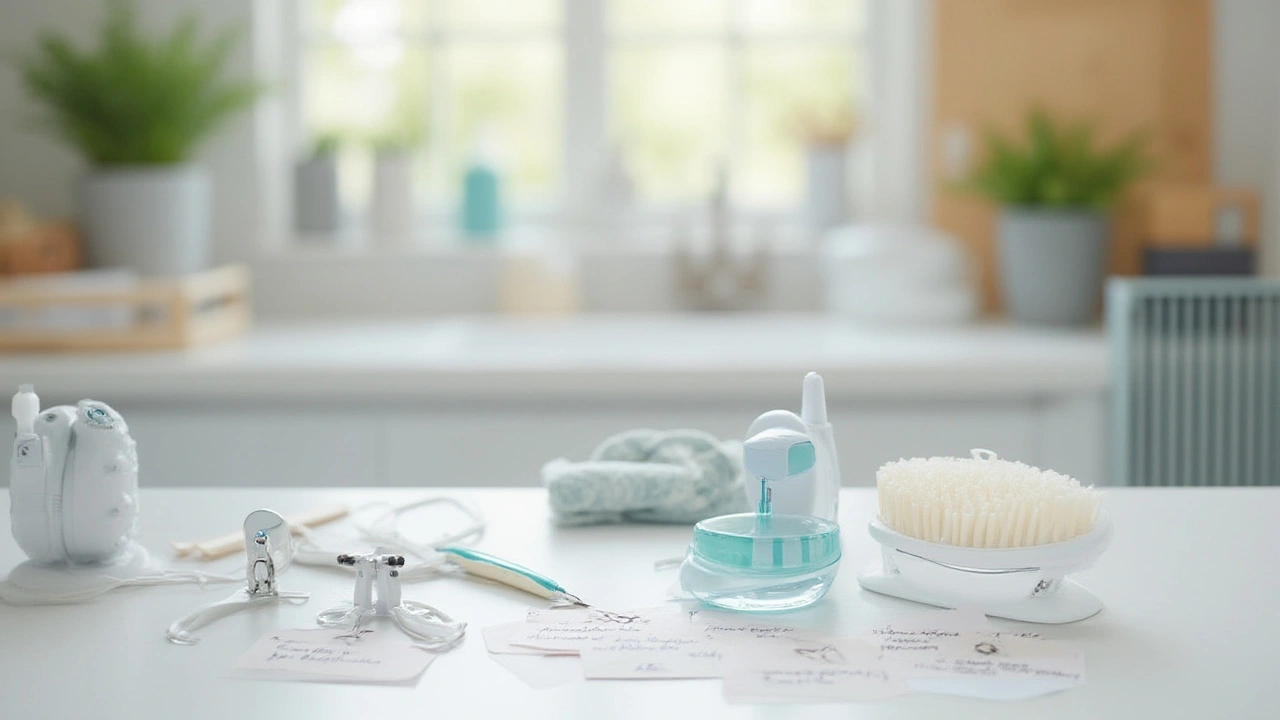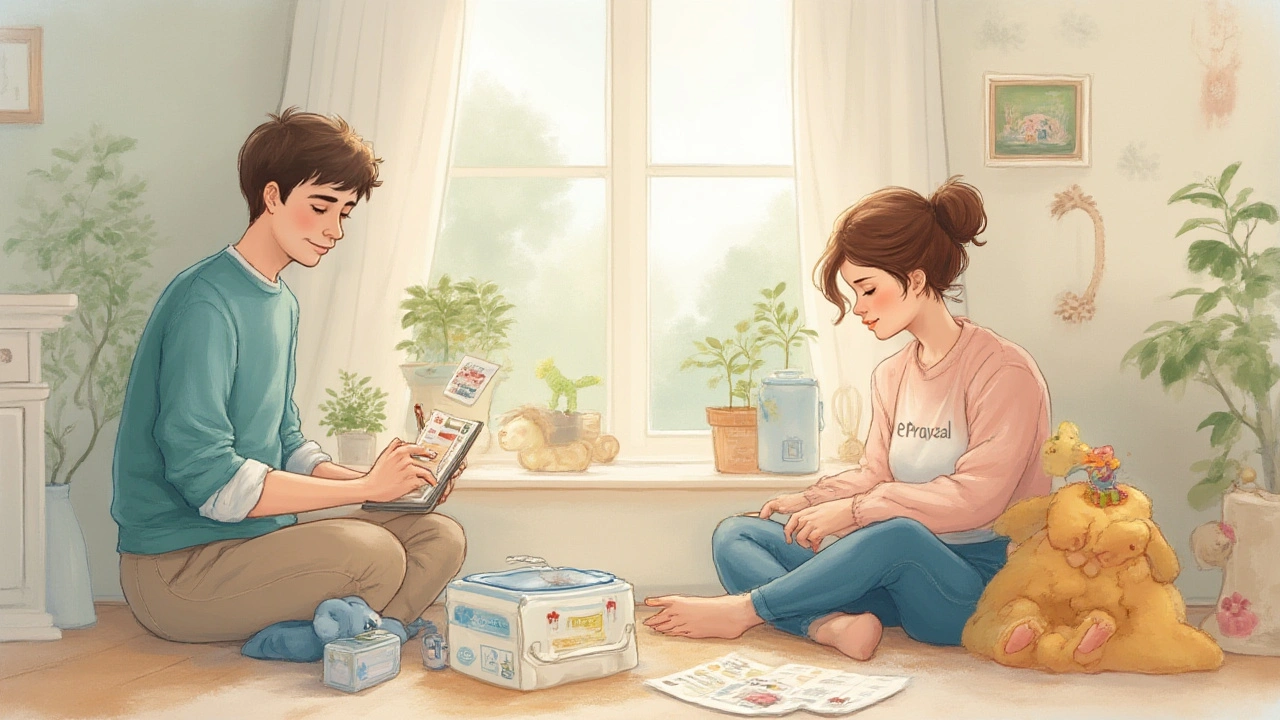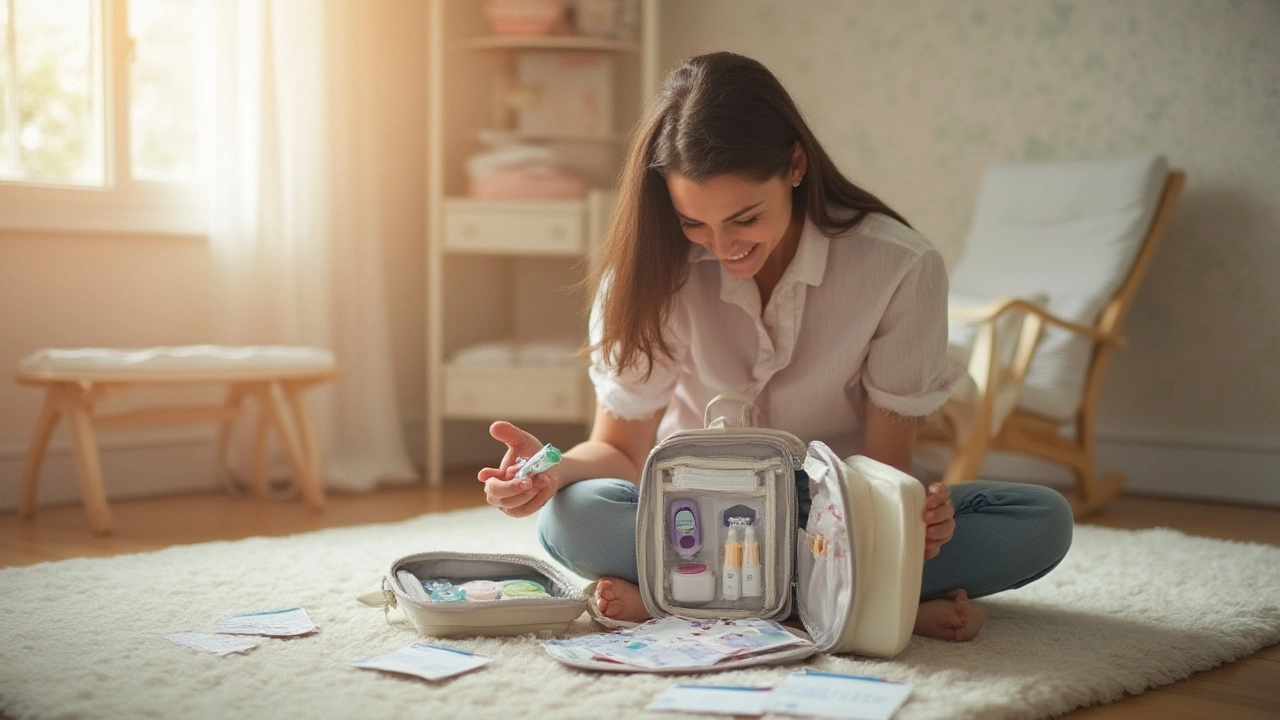Here’s something wild—nine out of ten parents admit to feeling unprepared when a baby’s first sniffle or scraped knee happens. You might expect parenthood to come with a learning curve, but nobody warns you about how fast those first little emergencies show up. Grab your coffee (or whatever keeps you going), because it’s time to get real about newborn first aid kits, the one thing you hope you never need but will be seriously grateful for when you do.
Why Every Parent Needs a Newborn First Aid Kit
Picture this: it’s 2am, and your baby has a fever. You’re sleep-deprived, Google-searching like your life depends on it, and suddenly you realize you have no thermometer in the house. Sound familiar? This exact scenario is why a newborn first aid kit belongs on every new parent’s to-do list. These kits don’t just hold bandages and creams—they’re a stash of quiet confidence. Having everything organized in one spot cuts stress, shaves minutes off frantic searches, and might even keep you out of the ER for minor mishaps.
Before you shrug it off and add ‘first aid kit’ to your cart without thinking, let’s talk about why customizing your kit matters. Babies aren’t small adults. Their skin is thinner, they respond differently to medications, and tiny changes in temperature can signal big trouble. Even panicking a little less because you’ve got what you need on hand can make a volume of difference during those stressful moments.
Here’s something most people don’t realize: according to the American Academy of Pediatrics, most newborn accidents are nothing dramatic, but simple things like nail scratches, rashes, or fevers. You don’t need a full pharmacy—just a curated selection of tools made for tiny emergencies. The goal is simple: skip the panic, handle the basics at home, and know when to call in the pros. Having a newborn first aid kit puts you instantly ahead of the curve—and when it comes to new parenthood, who doesn’t want that?
What to Include: The Must-Have Essentials
Alright, now to the good stuff—what exactly goes inside that kit, and what’s just clutter? Forget the 90-piece drugstore bundle full of items you’ll never use. Here are the must-haves, drawn from real-life parenting and advice from pediatricians:
- Digital thermometer: Ear and forehead versions are easy, but in those early months, stick with a rectal thermometer for accuracy.
- Baby nail clippers or a soft emery board: Newborn nails are oddly sharp—think cat-level sharp—and they’ll surprise you with how quickly they grow.
- Nasal aspirator: Babies can’t blow their noses—enough said.
- Saline drops: These help loosen stubborn boogers. Trust me—total game-changer during colds.
- Gauze pads and bandages: You won’t use them every day, but when a scratch or vaccination site needs covering, you'll be glad they're there.
- Alcohol wipes: Perfect for cleaning thermometers or tweezers, not for baby skin.
- Antibiotic ointment (for babies): Keep those little scratches from getting infected, but always check with your pediatrician before using.
- Baby-safe pain reliever (acetaminophen): Only give with doctor’s go-ahead, but it’s smart to have a bottle approved for newborns ready.
- Medicine syringe or dropper: Getting a wiggly baby to take medicine? Don’t even try with a spoon. Syringes make it manageable.
- Instant cold pack: For bumps, or to soothe teething pain. Wrap in a cloth to protect delicate skin.
- Baby thermometer strips or forehead scanner: Good for quick checks, but don’t skip the digital for official readings.
- Tweezers: For removing splinters or stray hairs around tiny fingers.
- Emergency contact list: Print or write down pediatrician and poison control numbers, plus allergies or medical info if needed.
- Small flashlight: If you ever have a power outage—or just need to check a rash at 3am—this is essential.
- Thermal blanket: Compact, lightweight, and surprisingly handy if you’re ever stuck somewhere during an emergency.
This starter list covers most baby moments you’ll face in the first year. If your child has special medical conditions, talk to your pediatrician about other supplies you might need.

How to Store and Organize Your Kit
It’s not enough to have the right stuff—you need to be able to find it in a panic. Let’s be honest, when your baby’s crying in the middle of the night, you don’t have time to rummage through a toolbox full of random odds and ends. Here’s how to keep things simple and accessible:
First, pick a container that’s easy to open with one hand. Latching boxes with clear tops work best, or look for a soft-sided zip pouch. Label it clearly so anyone—a babysitter, your partner—can spot it quickly in a crowded diaper bag or drawer.
Sort your supplies into categories: fever, wound care, nasal stuff, and so on. Even color-coding with little pouches inside the main kit works wonders when you’re in a hurry. Some parents use plastic zip bags to keep smaller items separate and clean.
Out of sight can equal out of mind, so stash the kit somewhere you’ll actually remember—bathroom, kitchen, or inside the nursery closet works for most families. If you have multiple floors, consider a second mini kit near your main living space for true preparedness.
If you have multiple caregivers, walk them through your kit at least once. It’s surprising how many partners freely admit they have zero idea where the nail clippers are. A quick five-minute rundown can make all the difference during an urgent moment. And don’t forget to check expiration dates on medications or ointments every six months—you’d be surprised how fast time flies in the baby haze.
Tips for Using Your First Aid Kit Safely
When you’re in the thick of things with a crying baby, instinct says fix it right now. But using that first aid kit safely is about staying calm and following best practices. Here’s what pediatric pros say:
- Always read medicine dosing instructions carefully. Newborns need incredibly small doses—never guess or eyeball it. Use the syringe, not a kitchen spoon.
- Double-check the right tool before you use anything—using adult antibacterial creams or painkillers on babies could cause allergic reactions or worse. Stick to baby-marketed options.
- If you’re dealing with fever, rashes, or suspected infection, contact your pediatrician if symptoms last more than 24 hours or you see things getting worse fast.
- Never cover cuts or burns with cotton balls—they can stick and cause more irritation. Use sterile gauze instead.
- Before using tweezers or scissors, wipe them down with alcohol. Baby skin is especially prone to infection from germs.
- If your baby chokes or stops breathing, don’t waste time looking for supplies—call emergency services right away and begin infant CPR if you know how. Every second counts.
- For medicine, track what you give and when, even scribbled on a notepad, to avoid accidental double doses in the fog of a sleepless night.
Perhaps the best safety tip comes from experienced parents: trust your gut. If you’re worried, even if it feels minor, it’s better to call and ask than regret missing something serious. No kit in the world replaces good judgment and your parental instincts.

Keeping Your Kit Up to Date and Emergency-Ready
Don’t set it and forget it—babies change so fast that what was perfect at one week might be outdated three months later. Stay ahead by making it a habit to do a quick check when you buy new diapers or swap out seasonal clothes. Pull out expired meds, top off missing items, and switch up supplies as your baby grows (for example, once your child starts crawling, splinters and stingers join the list of likely emergencies).
Here’s an easy trick: keep a small notepad or sticky inside the kit and jot down every time you use something so you’ll remember to replace it on your next store run. Consider setting a bi-monthly reminder on your phone—future you will definitely thank you when baby number two (or a friend's baby) comes along and you don’t have to start from scratch.
Being prepared isn’t about living in fear—it’s about making life with a newborn a little less overwhelming. And let’s face it, when you carve out even a sliver of calm for yourself or your baby, everybody wins. Here’s something concrete to make it easier—check out this quick breakdown of first aid kit items and their average expiration times:
| Item | Average Expiration |
|---|---|
| Baby Pain Reliever | 2 years |
| Antibiotic Ointment | 1 year |
| Alcohol Wipes | 2 years |
| Thermometer Batteries | 1-2 years |
| Saline Drops | 3 years (unopened) |
Grab your essentials, get organized, and take one thing off your mental load. When that next surprise sneeze attack, fever, or tumble happens, you’ll know exactly where to reach—and sometimes, that’s half the battle won.
